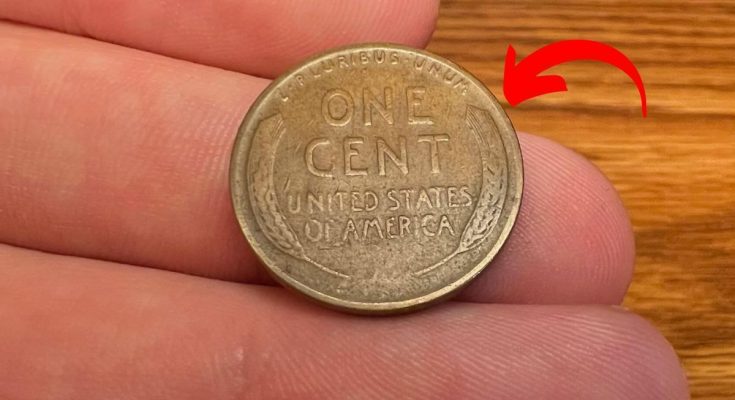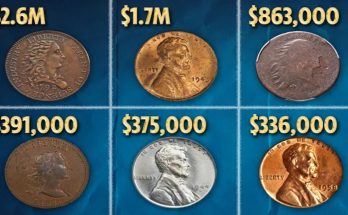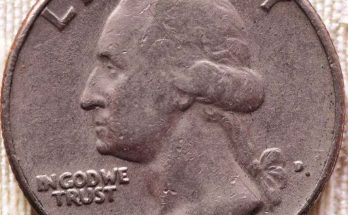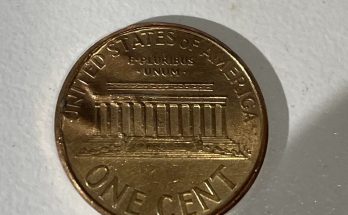Let’s be honest—how often do you actually stop and look at a penny? For most of us, it’s just spare change, something we leave at the bottom of a drawer or drop in a tip jar without a second thought. But here’s something that might make you take a closer look: some Lincoln Wheat Pennies have been valued at up to $6 million.
Yes, you read that right—a single, humble one-cent coin could be worth more than a private jet. And the craziest part? One of these legendary coins might still be hiding in a piggy bank or pocket somewhere, just waiting to be found.
A Coin That Made History
The Lincoln Wheat Penny made its first appearance in 1909, and it was kind of a big deal. It was the first U.S. coin to feature a real person—none other than President Abraham Lincoln. Until then, American coins had been decorated with symbolic figures like Lady Liberty or allegorical images, but this marked a major shift toward honoring historical figures.
Designed by Victor David Brenner, the front featured Lincoln’s profile, while the back showed two simple wheat stalks flanking the words “ONE CENT.” This design stayed in circulation until 1958, and for nearly 50 years, it was the go-to penny for millions of Americans.
But somewhere in the mix of this everyday currency, something rare—something priceless—was accidentally created.
A Wartime Mistake That Changed Everything
Fast-forward to 1943, right in the middle of World War II. Copper had become a critical material for the war effort—used in everything from bullets to telephone wires—so the U.S. Mint made a change. Instead of copper, pennies would now be made from zinc-coated steel, creating a silvery-looking coin that stood out from its copper cousins.
But as the switch happened, a few copper planchets—the blank discs used to make coins—were accidentally left in the minting machines. These were struck with 1943 dies, creating a coin that was never supposed to exist: a 1943 Lincoln Wheat Penny made of copper.
Experts believe that fewer than 20 of these coins were ever produced—and that’s what makes them so valuable. Today, one of these rare copper 1943 pennies can fetch as much as $6 million.
Other Wheat Pennies Worth Big Bucks
While the 1943 copper penny gets all the headlines, it’s not the only Lincoln Wheat Cent that can fetch a small fortune. Here are a few others worth keeping an eye out for:
- 1909-S VDB: This was the first version of the Lincoln penny with the designer’s initials (V.D.B.). The Mint quickly pulled it from production, making it extremely rare and highly valuable—worth thousands in good condition.
- 1914-D: Minted in Denver and made in low numbers, this one’s a favorite among collectors.
- 1922 “No D”: A worn die at the Denver Mint created a batch of pennies with no mint mark, making them a collector’s prize.
- 1955 Doubled Die: Look closely—this one has visible doubling on the date and lettering. It’s a striking error and instantly recognizable.
Could You Actually Find One?
Believe it or not, yes.
While most rare pennies have been scooped up by collectors, there are still stories of ordinary people stumbling upon valuable coins in old change jars, inherited collections, or even loose pocket change. In fact, in 2019, a family in Massachusetts discovered a 1943 copper penny their father had unknowingly saved since childhood—it turned out to be worth a fortune.
So don’t dismiss that old coffee can full of coins in the attic just yet. There could be a $6 million surprise in there.
How to Spot a Rare Wheat Penny
Here’s what to look for if you want to join the treasure hunt:
- Wheat Design: Flip the penny over. If it has two wheat stalks on the back, it’s a Lincoln Wheat Penny minted between 1909 and 1958.
- Key Dates: Look for dates like 1909-S, 1914-D, 1922 (no D), and especially 1943.
- Metal Test: Most 1943 pennies are steel and will stick to a magnet. The rare copper ones won’t.
- Color and Weight: Copper has that classic reddish-brown look and weighs around 3.11 grams, while steel pennies are silvery and weigh about 2.7 grams.
Condition Matters—A Lot
Even if you find a rare date, condition is everything in the world of coin collecting. Scratches, wear, and corrosion can knock down the value—but pristine examples? Those can fetch millions.
If you think you’ve found something special, handle the coin carefully—touch only the edges, never clean it, and store it safely in a protective holder.
Authentication Is Key
Before you start celebrating, get that penny authenticated by a professional service like PCGS or NGC. These experts will verify whether the coin is real, assess its condition, and assign a grade that helps determine its value.
Why is this so important? Because unfortunately, there are a lot of counterfeits out there. Some fakes are made by copper-plating steel pennies or altering the dates on 1948 coins to resemble 1943. Don’t fall for it—only trusted grading services can tell the real from the fake.
A Living Piece of American History
Beyond the dollar signs, the Lincoln Wheat Penny is a genuine artifact of American life. These coins were passed from hand to hand during the Great Depression, bought war bonds during WWII, and paid for lunch during the Baby Boom era. When you hold one, you’re holding a piece of our nation’s story.
And that’s part of the magic. This isn’t just about collecting coins—it’s about connecting with history in a tangible way.
Final Thoughts: Treasure Might Be Closer Than You Think
The idea that a penny—something most of us barely notice—could be worth millions is the kind of story that never stops fascinating people. And the best part? It’s still possible.
So the next time you’re counting change at the register, cleaning out a drawer, or thumbing through an old jar of coins, take a second look.
Because that ordinary penny might just turn out to be the extraordinary discovery of a lifetime.



